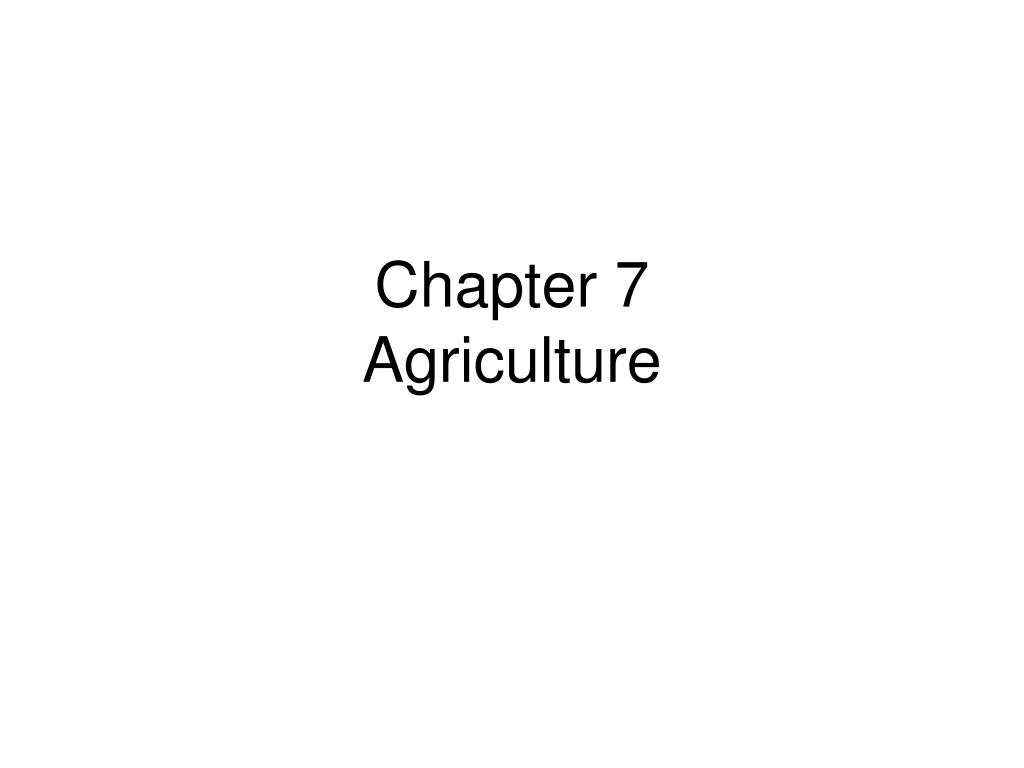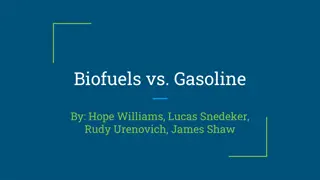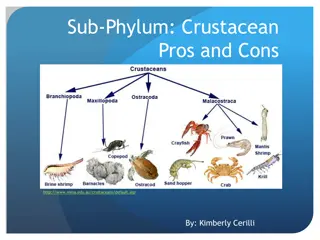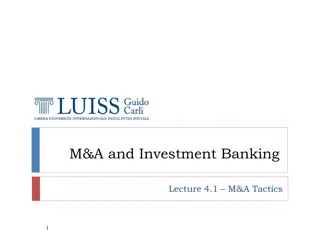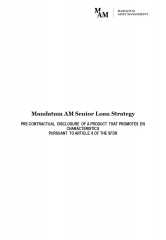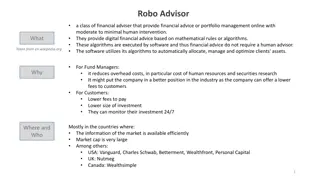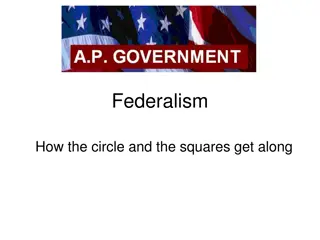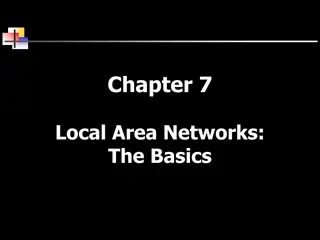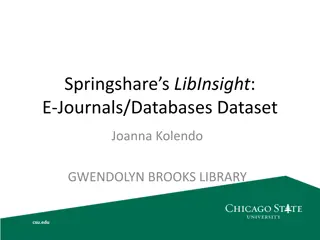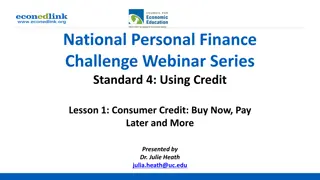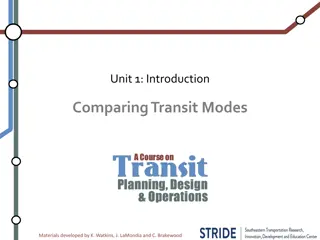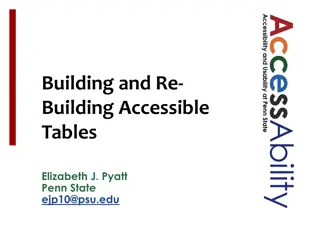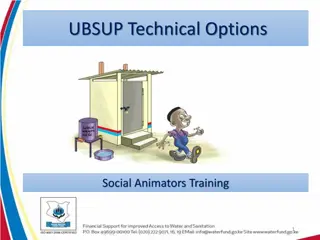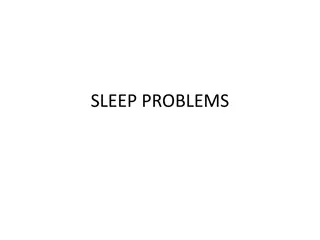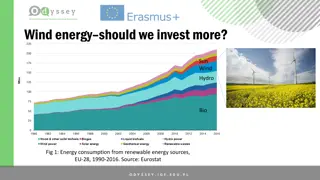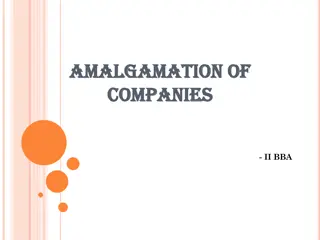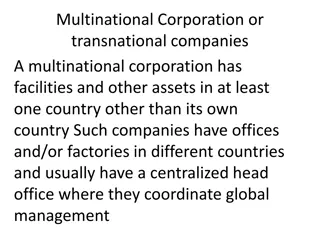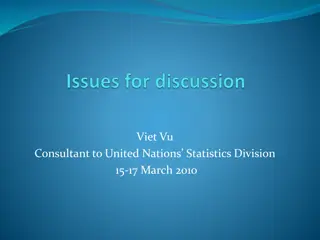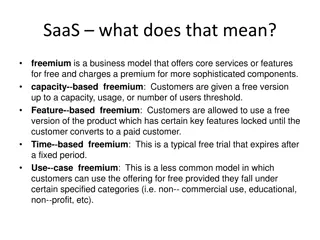Agriculture as an Investment: Pros and Cons
Agriculture, despite its declining share in GDP and employment as per-capita incomes rise, still plays a crucial role in providing labor, savings, foreign exchange, tax revenue, and market demand for manufactured goods. Various policies and factors, such as cheap food policies, taxation, subsidies for industry, and trade policies, can affect the sector's growth and productivity. Technology also plays a vital role in shaping the future of agriculture.
Download Presentation

Please find below an Image/Link to download the presentation.
The content on the website is provided AS IS for your information and personal use only. It may not be sold, licensed, or shared on other websites without obtaining consent from the author. Download presentation by click this link. If you encounter any issues during the download, it is possible that the publisher has removed the file from their server.
E N D
Presentation Transcript
Chapter 7 Agriculture
Is Agriculture a Good Investment? 70% of the world s population lives in rural areas and most of the poor Agriculture s shares of GDP and employment both plummet as per-capita incomes rise Why invest in a sector that s becoming less important all the time?
Countries Where Agriculture Does Not Grow Quickly Do Not Grow Quickly... Agricultural Growth Low Medium High Per- capita Income Growth Low 17 5 3 Medium 10 0 3 High 11 2 1 Source: Peter Timer, Handbook of Development Economics
Ag and Non-ag Growth A one percentage point increase in agricultural growth is associated with nearly a half (.45) percentage point increase in non- agricultural growth But don t confuse with cause- and-effect!
Agricultures Contributions 1. Source of labor for modern sector 2. Source of savings for investments 3. Source of foreign exchange through exports 4. Source of tax revenue 5. Market for manufactured goods
Three Kinds of Policies that Have Hurt Agriculture Cheap food policies, taxation Government pays farmers below-market price Good for consumers, keeps wages low Results in too little food production, more imports High taxes on farmers do same Sectoral Policies: Subsidies for industry Direct subsidies, cheap credit, infrastructure investment Make agriculture less profitable relative to industry, draw resources out of agriculture Trade policies Overvalued exchange rate makes imported inputs, technology, and food cheaper Hurts producers of exports and importable goods (tradables) Import substitution (quotas, import tariffs) for manufactures makes industry more profitable relative to agriculture A few low-middle income (e.g., CAFTA) countries protect agriculture Good for commercial farmers, bad for consumers Any of these policies can create distortions, welfare losses
Technology Matters! (Traditional agriculture s inelastic supply response)
Technological Change Can Shift Out, Flatten the S Curve
Increasing the Supply Response Requires technological change Focus on the constraints Mechanical packages (labor-saving) Biological package (land-saving) Benefits: Raise farm incomes, make food cheaper How? R&D, extension, credit, market development
Why Agriculture Is Different Nature as input Uncertainty, timing Many producers, land is an input, so spread out Producer and consumer in same unit How do you design policies to reach and influence millions of farmers? Need a model!
The Agricultural Household Model Staple of agricultural policy analysis in LDCs Producer and consumer in same model Household provides many of its own inputs It consumes part or (more often than not) all of its output How do we model such an animal?
Its a Household, So Start with Consumer Theory
What Happens When the Price of Food Goes Up?
But the Farm Household is a Producer, too! Farm Profits Go Up!
The Profit Effect Shifts the Budget Constraint Outward
Is the Agricultural Household Better Off When Food Prices Rise? It depends The household gains as a producer but it loses as a consumer A big surplus-producer benefits most A net buyer loses
The Big Lessons from Agricultural Household Models If a government wants to increase the supply of food for its urban consumers, raising the price of food will not necessarily help It depends on the marketed surplus effect If the price of food goes up, it can be bad news not only for urban consumers but also small farmers Chris Barrett found most small farm households are net buyers of food
How Do We Know Whether Higher Food Prices Help Rural Households? The Net Benefit Ratio (Amartya Sen):
Measuring Welfare Effects: The Net Benefit Ratio (NBR) Angus Deaton Ratio of net agricultural sales (MS) to total income (or expenditures, E) E.g.: A household produces $250 and consumes $50. Its total income is $500. The NBR = (250-50)/500=.4 A 1% increase in output price raises welfare by 0.4% A negative NBR tells us the household is worse off if the crop price goes up (true for all non- agricultural and most agricultural households)
Everything Depends on the Supply Response Many things can constrain the supply response (i.e., make the supply curve vertical), especially on small farms Limited access to land, and especially irrigated land Poor land quality Technological limitations, including lack of access to high- productivity seeds Limited access to modern inputs, like fertilizer A lack of cash to purchase inputs, and limited or no access to credit Limited or no access to insurance to protect against crop failure Labor constraints
How Constraints can Kink the Supply Curve Constraints bind at Qac
The Subsistence Household Where are the prices? (Answer: they re shadow prices, not market prices.) Notice the household s budget constraint is now the PPF! PPF: Production Possibility Frontier (why not a straight line?)
Most Staple Producers in Eastern and Southern Africa Aren t in the Market Source: Barrett, Food Policy, 2008
Food Security vs. Self- sufficiency Food security: securing year-round access to an adequate supply of nutritious and safe food to meet the dietary needs of all members of the household Can be either through own production or purchases (Callens and Seifert, 2003) I m food secure but certainly not self- sufficient!
Production and Consumption, Normal Year, With Markets Fish (Qf,Cf) - pr/pf Marketed Surplus B C 1 A PPF Rice (Qr, Cr) Purchases
Production and Consumption, Drought Year, With Markets
Production and Consumption, Rice Collapse, With Markets Fish (Qf,Cf) B - pr/pf Marketed Surplus C 1 Rice (Qr, Cr) Purchases
Production and Consumption, Normal Year, Without Markets
Production and Consumption, Drought Year, Without Markets Fish (Qf,Cf) A 0 PPF Rice (Qr, Cr)
Production and Consumption, Rice Collapse, Without Markets Fish (Qf,Cf) A 0 Rice (Qr, Cr)
Conflict within the Household? Does it make sense to have a household utility function? Or is the household a collection of individuals each with his/her own preferences and resources? Are the interests of different household members compatible? In a cash transfer program, does it matter whom you hand the money to?
Nash-bargained Households (John Nash, as in The Beautiful Mind) Consider two people, persons m and f Let: vmbe m s utility or welfare if they do not form a household, and let vfbe person f s. If they form a household, they ll combine their income and spend it on things either or both care about. Person m s welfare will be Umand f s will be Uf
Marriage and Threat Points Neither one will want to form a household unless there s a positive welfare gain in it So both Um - vm and Uf vf must be positive Once the household gets formed: The hh utility funciton is: U=(Um - vm)(Uf vf ) vmand vfare threat points The utilities the two people would have in the game of being single. The higher a person s threat point, the more bargaining power s/he has in the Nash-bargained household.
Income and Assets Raise the Threat Point Who controls the cash significantly explains household expenditures (boxes) A rupee is not a rupee If you want more spending on nutrition, health, education, give cash to women Chris Udry: Female plots get less fertilizer than male plots Households could be better off by shifting inputs from male to female plots but they don t
Beyond Households http://www.youtube.com/watch?v=j-zczJXSxnw Linkages among households shape impacts of development projects and other shocks Like ripples in a pond General-equilibrium (GE) effects Box: subsistence households aren t isolated from food price shocks!
Policy or Market Change
Policy or Market Change They adjust
Policy or Market Change Farm-nonfarm linkages They affect others
Policy or Market Change Farm-nonfarm linkages who adjust
Policy or Market Change Farm-nonfarm linkages and affect still others
Subsistence Response to Market Shocks (Box)
Subsistence Response to Market Shocks (Box)
